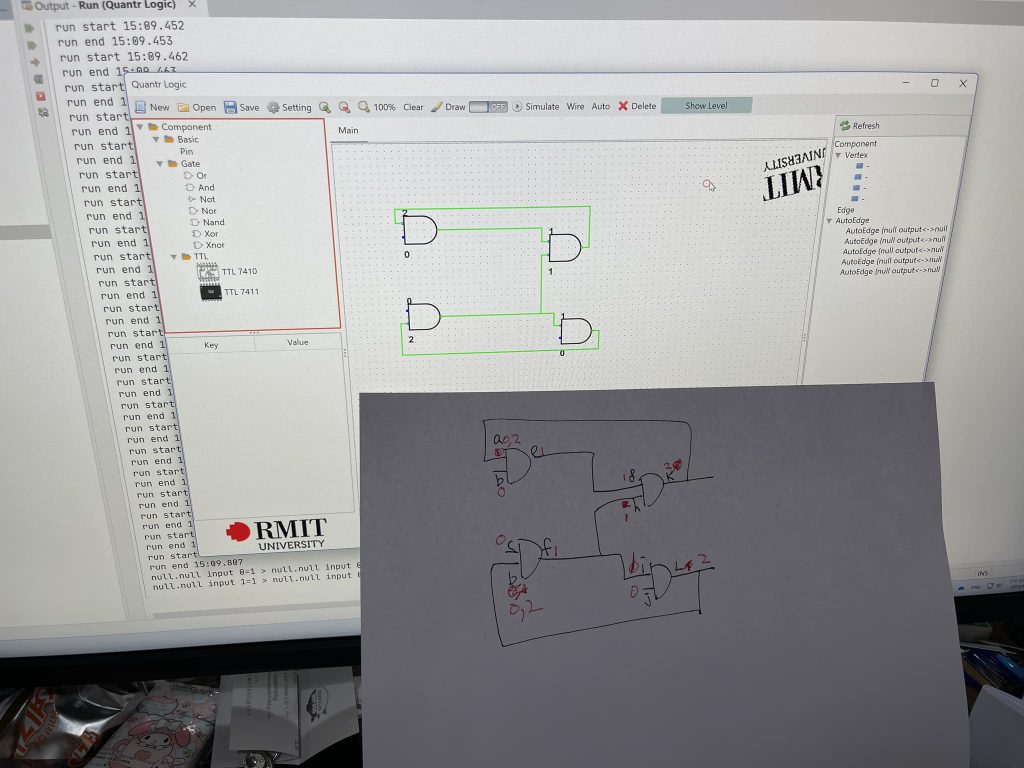Combinational logic circuits are essential in digital systems, but as the complexity of these systems increases, the intricacies of the circuits can become quite overwhelming. One effective way to manage this complexity is through LUT (Look-Up Table) breaking. This approach allows designers to optimize and simplify circuits, even those with a vast number of inputs and outputs. Let’s explore some more substantial and technical examples to illustrate the efficacy of LUT breaking.
What is a Combinational Logic Circuit?
Combinational logic circuits consist of logic gates like AND, OR, XOR, NAND, NOR, and NOT, which perform basic logical functions. These gates can be combined in numerous ways to execute complex operations required in digital systems, such as arithmetic calculations, data processing, and decision-making based on binary input conditions. It can produce an output that is solely dependent on the circuit inputs with no memory of past states. To manage the complexity of the logic circuits, Look-Up Table (LUT) breaking could be used to improve the simplicity, speed, and flexibility of the logic circuit.
Simplifying with LUT Breaking
As digital systems grow more complex, the number of logic gates used can skyrocket, making it challenging to design and understand the circuit. This is where Look-Up Tables (LUTs) come in handy. LUTs are a form of memory that stores results of logic operations. Instead of calculating the result each time, the circuit can simply look it up, saving time and resources.
Breaking down a complex logic circuit into smaller pieces using LUTs is known as LUT breaking. This involves replacing sections of the circuit with a LUT that represents the same functionality. Think of it like replacing a long and complicated recipe with a simple set of cooking instructions. The meal (output) remains the same, but the process is much easier to follow.
Examples of LUT Breaking
Let’s look at an example to clarify this concept. Imagine a circuit that takes three inputs and has one output. The output turns on only when a specific combination of inputs is present. Instead of having multiple gates for this, we can use a LUT. The LUT will have all possible input combinations listed, with the corresponding output.
For instance, if inputs A, B, and C are “101”, the LUT will have an entry saying the output is “1”. This way, the circuit doesn’t need to process the inputs through several gates; it just checks the LUT.
Why Break Down Logic with LUTs?
The reason why we have to break down logic with LUTs is scalability and manageability. As circuits grow in complexity, it becomes nearly impossible to manage and optimize them without some form of abstraction. LUT breaking provides a manageable way to deal with complex combinational logic, allowing for more efficient design and a better understanding of the circuit’s functionality. It simplifies complex logic designs, making them easier to understand and modify. Furthermore, with LUTs, the output is just a memory access away, which can be faster than processing through multiple gates. Changing the circuit’s behavior is as simple as updating the LUT, without the need to rewire or alter the physical gates. By using LUTs, reducing the number of gates can also lower the power consumption, which can improve its efficiency.
While the benefits are clear, LUT breaking is not without its challenges. It requires a deep understanding of the logic being implemented and can sometimes lead to increased design time as the circuit is re-evaluated and tested to ensure no functionality is lost. Moreover, it is a balancing act between simplifying the logic and not overcomplicating the circuit with too many levels of smaller LUTs, which can introduce their own set of delays and complexities.
Conclusion
LUT breaking is a powerful technique in the optimization of combinational logic circuits. It allows designers to maintain control over complexity, manage power consumption, and ensure that the circuit remains both scalable and efficient. As digital systems continue to evolve, mastering the art of LUT breaking will be crucial for engineers looking to push the boundaries of what’s possible in the realm of electronic design.
We are researching the http protocol and building our own http server. This guide build apache and test it out.
wget https://dlcdn.apache.org/httpd/httpd-2.4.56.tar.bz2
tar jxvf httpd-2.4.56.tar.bz2
cd httpd-2.4.56/
sudo apt-get install apache2-utils libapr1 libapr1-dev libaprutil1-dev -y
./configure --enable-cgi --prefix=/home/peter/Download/my-httpd
make -j
make installThen you have this

Run the apache with CGI connects to PHP
- edit conf/httpd.conf , change “Listen 80” to “Listen 8765”
- run bin/httpd
This is our first draft of the proposal to develop a new programming language for kids called “Lion”. We want to promote our coding philosophy and advance our teaching for kids, it is impossible to achieve by using existing languages. We need to be flexible to add or modify the syntax of a language, so we can let it embed our coding philosophy.
你好嗎

Post 1




